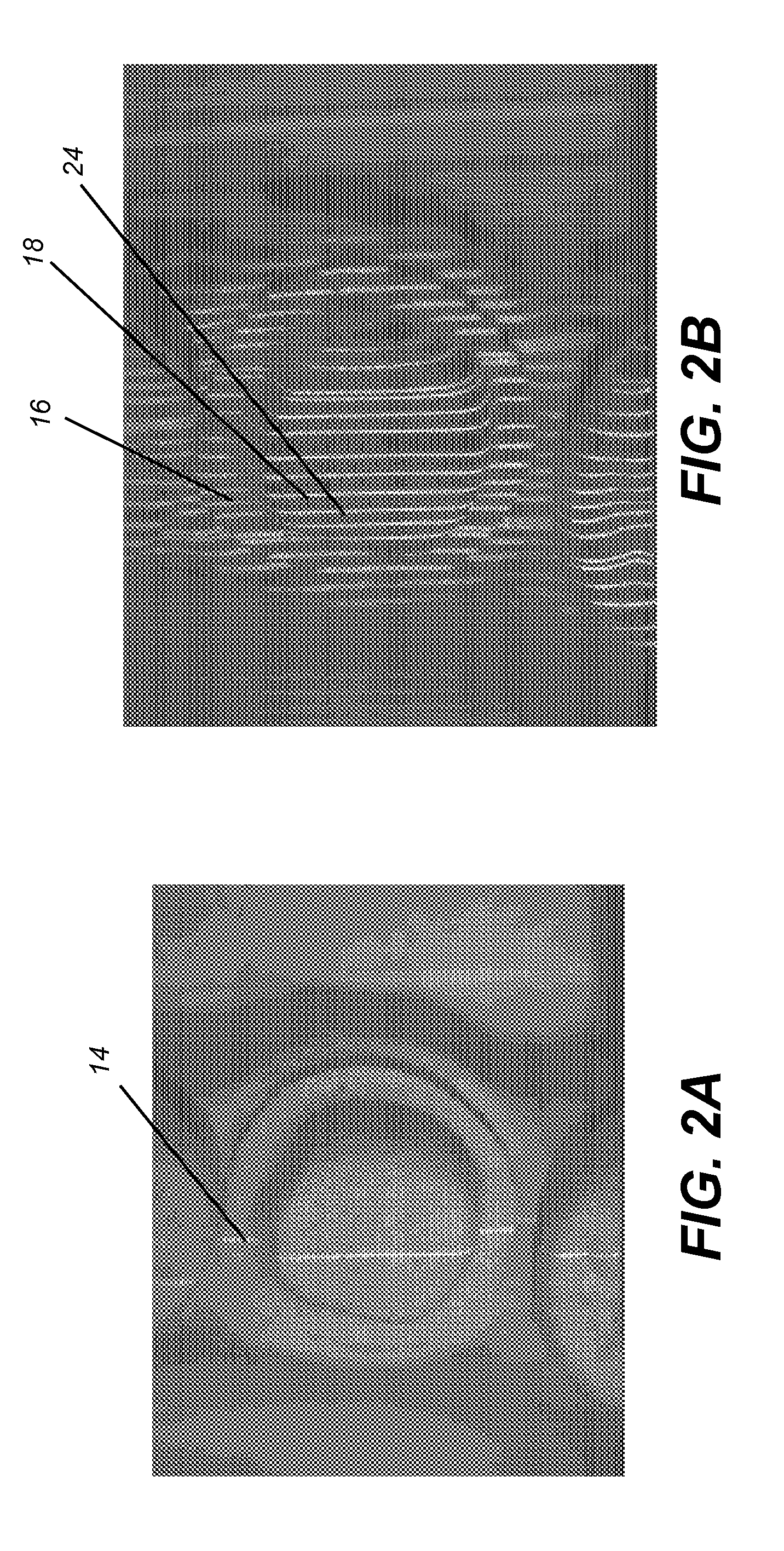3D intraoral measurements using optical multiline method
a multi-line, optical technology, applied in the field of surface shape imaging, can solve the problems of inability to effectively use fringe projection imaging of teeth, inaccurate height data, and inability to accurately detect the shape of the tooth, so as to reduce the ambiguity of sensed patterns
- Summary
- Abstract
- Description
- Claims
- Application Information
AI Technical Summary
Benefits of technology
Problems solved by technology
Method used
Image
Examples
Embodiment Construction
[0031]The following is a detailed description of the preferred embodiments of the invention, reference being made to the drawings in which the same reference numerals identify the same elements of structure in each of the several figures. Where they are used, the terms “first”, “second”, and so on, do not necessarily denote any ordinal, sequential, or priority relation, but are simply used to more clearly distinguish one element or set of elements from another.
[0032]The schematic diagram of FIG. 1 shows, with the example of a single line of light L, how patterned light is used for obtaining surface contour information. A mapping is obtained as an illumination array 10 directs a pattern of light onto a surface 20 and a corresponding image of a line L′ is formed on an imaging sensor array 30. Each pixel 32 on imaging sensor array 32 maps to a corresponding pixel 12 on illumination array 10 according to modulation by surface 20. Shifts in pixel position, as represented in FIG. 1, yield...
PUM
 Login to View More
Login to View More Abstract
Description
Claims
Application Information
 Login to View More
Login to View More - R&D
- Intellectual Property
- Life Sciences
- Materials
- Tech Scout
- Unparalleled Data Quality
- Higher Quality Content
- 60% Fewer Hallucinations
Browse by: Latest US Patents, China's latest patents, Technical Efficacy Thesaurus, Application Domain, Technology Topic, Popular Technical Reports.
© 2025 PatSnap. All rights reserved.Legal|Privacy policy|Modern Slavery Act Transparency Statement|Sitemap|About US| Contact US: help@patsnap.com



